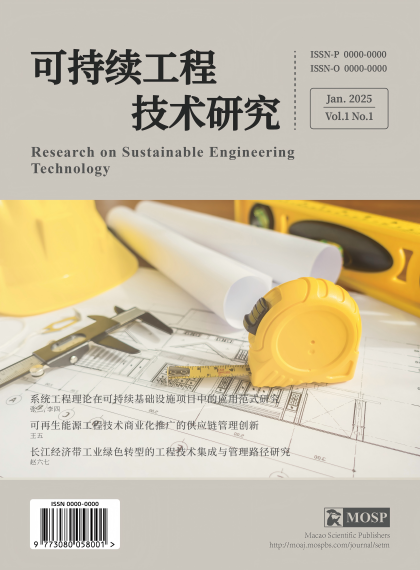摘 要:
微生物燃料电池(MFC)与膜蒸馏(MD)技术耦合是一种具有前景的废水处理与资源回收系统。本文以废水处理中能量回收与净化效率优化为目标,设计并研究了MFC耦合MD废水处理系统的运行参数与性能表现。首先,选取典型废水样品和电极材料,根据电化学特性与污染物去除效果,优化MFC的结构和操作条件。随后,通过调控膜蒸馏单元的温度梯度与流速参数,提高了MD的净化效率与膜通量。实验结果表明,耦合系统在能量回收方面表现出显著优势,化学需氧量(COD)去除率达到85%以上,同时有效减少膜污染问题。该系统不仅实现了污水处理目标,还实现了能量回收与高质量水再生,对于水资源管理和可持续发展具有重要意义,为废水处理技术提供了新的优化路径和设计思路。
关键词:微生物燃料电池;膜蒸馏;废水处理;能量回收;系统优化
Abstract:
The coupling of microbial fuel cell (MFC) and membrane distillation (MD) technologies represents a promising system for wastewater treatment and resource recovery. With the objectives of optimizing energy recovery and purification efficiency in wastewater treatment, this paper designs and investigates the operating parameters and performance of an MFC-coupled MD wastewater treatment system. Firstly, typical wastewater samples and electrode materials are selected. Based on electrochemical characteristics and pollutant removal effects, the structure and operating conditions of the MFC are optimized. Subsequently, by regulating the temperature gradient and flow rate parameters of the membrane distillation unit, the purification efficiency and membrane flux of the MD are improved. The experimental results demonstrate that the coupled system exhibits significant advantages in energy recovery, with a chemical oxygen demand (COD) removal rate exceeding 85%, while effectively reducing membrane fouling issues. This system not only achieves the goal of wastewater treatment but also realizes energy recovery and high-quality water regeneration. It is of great significance for water resource management and sustainable development, providing a new optimization path and design concept for wastewater treatment technologies.
Keywords: Microbial fuel cell; Membrane distillation; Wastewater treatment; Energy recovery; System optimization
--
